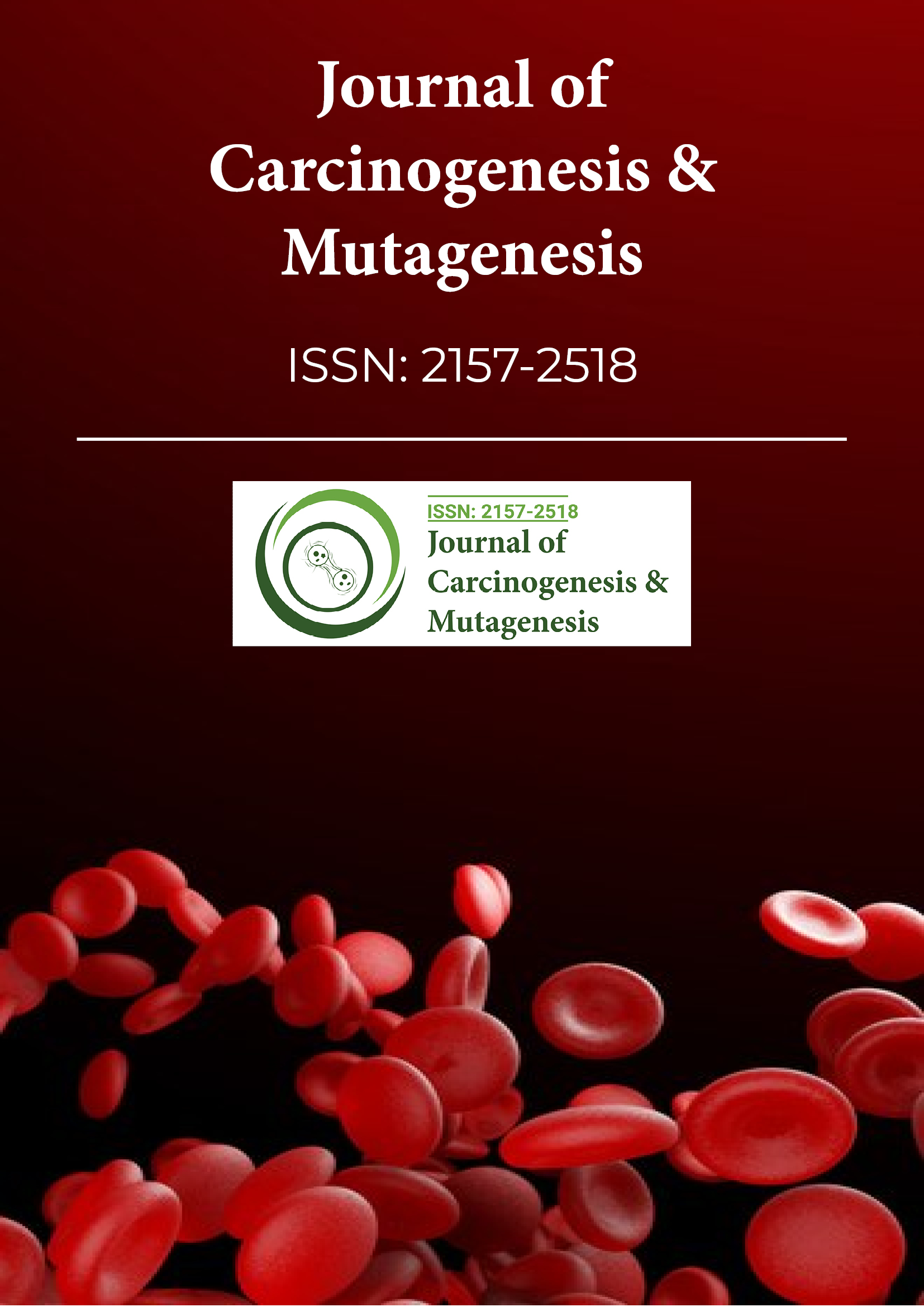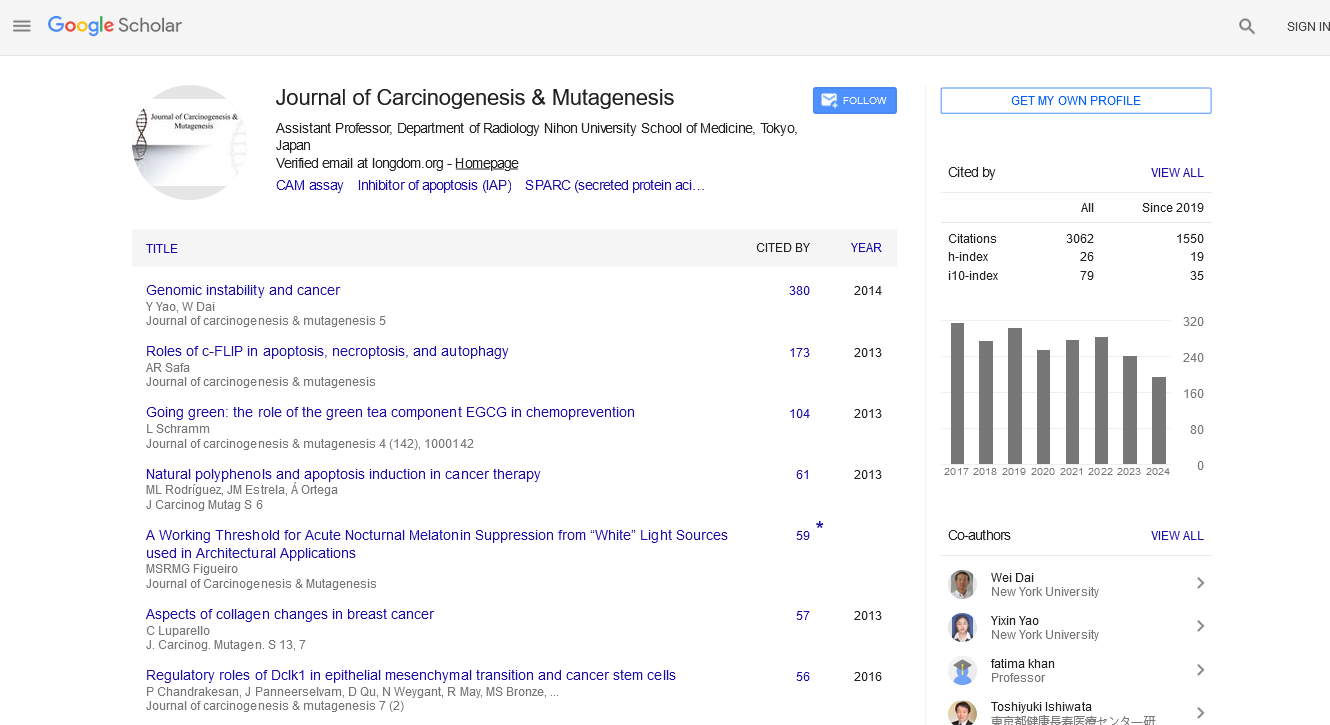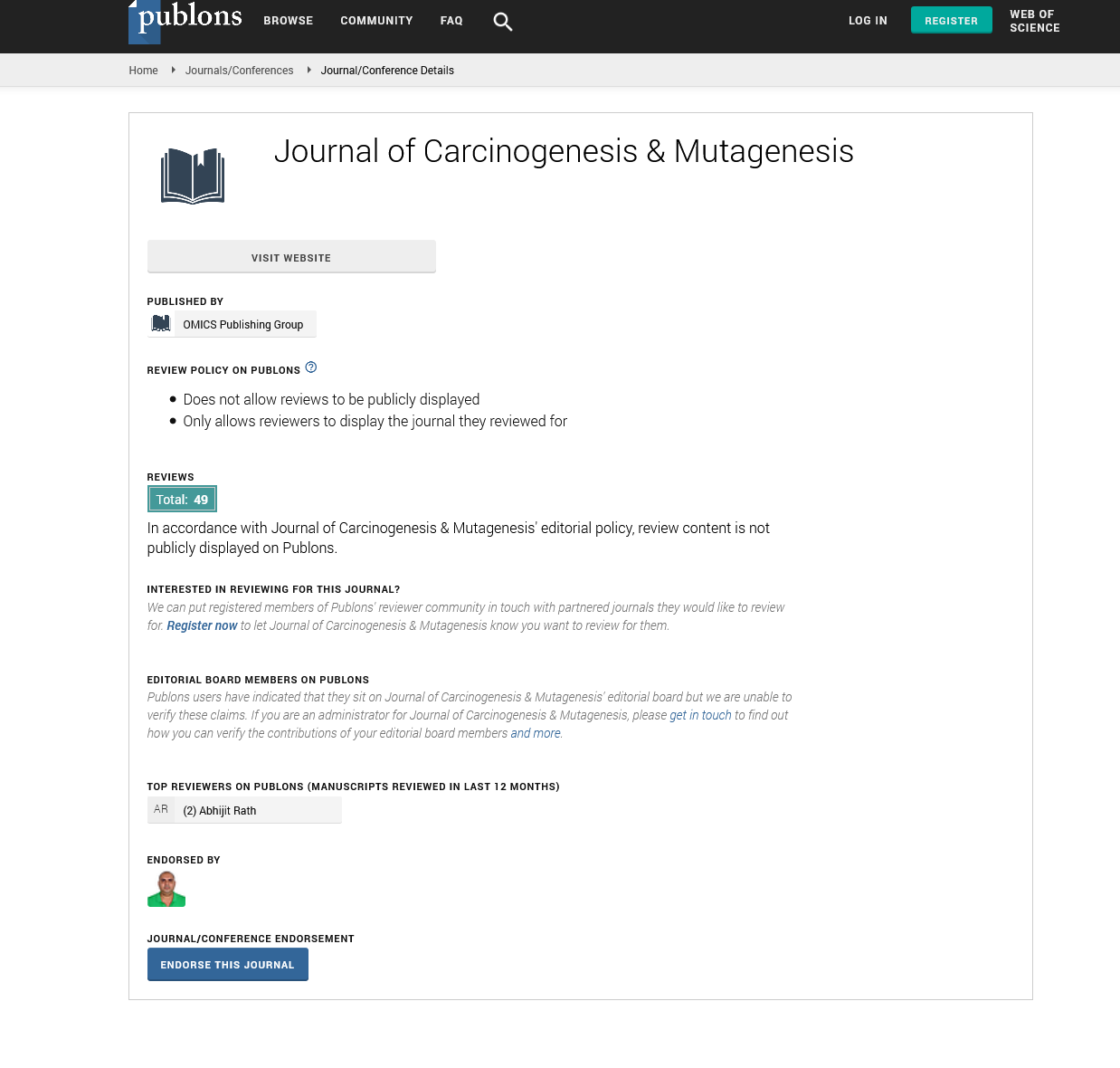PMC/PubMed Indexed Articles
Indexed In
- Open J Gate
- Genamics JournalSeek
- JournalTOCs
- Ulrich's Periodicals Directory
- RefSeek
- Hamdard University
- EBSCO A-Z
- OCLC- WorldCat
- Publons
- Geneva Foundation for Medical Education and Research
- Euro Pub
- Google Scholar
Useful Links
Share This Page
Journal Flyer

Open Access Journals
- Agri and Aquaculture
- Biochemistry
- Bioinformatics & Systems Biology
- Business & Management
- Chemistry
- Clinical Sciences
- Engineering
- Food & Nutrition
- General Science
- Genetics & Molecular Biology
- Immunology & Microbiology
- Medical Sciences
- Neuroscience & Psychology
- Nursing & Health Care
- Pharmaceutical Sciences
Commentary - (2023) Volume 14, Issue 4
The Impact of Genetic Mutations on Human Health and Evolution
Emily Watson*Received: 04-Jul-2023, Manuscript No. JCM-23-22869; Editor assigned: 06-Jul-2023, Pre QC No. JCM-23-22869(PQ); Reviewed: 20-Jul-2023, QC No. JCM-23-22869; Revised: 27-Jul-2023, Manuscript No. JCM-23-22869(R); Published: 04-Aug-2023, DOI: 10.35248/ 2157-2518.23.14.424
Description
Genetic mutations are the driving force behind evolution, diversity, and the complexity of life on Earth. These small but significant alterations in an organism's DNA can have a profound impact, ranging from subtle changes in physical traits to the development of diseases like cancer. In this article, we will explore the world of genetic mutations, their causes, consequences, and their role in shaping the natural world.
A genetic mutation is a change in the sequence of DNA molecules that make up an organism's genetic code. DNA, or deoxyribonucleic acid, carries the instructions needed for an organism's growth, development, and functioning. Mutations can occur spontaneously during DNA replication or be induced by external factors such as radiation, chemicals, or biological agents. They can manifest in various forms, including substitutions, insertions, deletions, or rearrangements of DNA segments.
Types of genetic mutations
Point mutations: These involve the replacement of one base pair with another. For example, a substitution of adenine (A) with thymine (T) in a DNA sequence can result in the production of an altered protein.
Insertions and deletions: These mutations involve the addition (insertion) or removal (deletion) of one or more base pairs in the DNA sequence. These shifts can lead to frameshift mutations, altering the reading frame for protein synthesis. Common examples include translocations, inversions, and aneuploidy, which can result in genetic disorders.
Causes of genetic mutations
Spontaneous mutations: These arise naturally during DNA replication or repair due to errors in DNA polymerase or other cellular processes. Spontaneous mutations are a fundamental driver of genetic diversity.
Induced mutations: Environmental factors such as radiation, chemical exposure, or viral infections can induce mutations. Ultraviolet (UV) radiation from the sun, for instance, is known to cause DNA damage, leading to skin cancer.
Inherited mutations: Some individuals inherit mutations from their parents. These genetic mutations can lead to inherited disorders like cystic fibrosis, sickle cell anemia, or Huntington's disease.
Consequences of genetic mutations
Beneficial mutations: While most mutations are neutral or harmful, some can be beneficial. These mutations can provide an advantage in specific environments, promoting adaptation and evolution. An example is the development of antibiotic resistance in bacteria.
Neutral mutations: Many mutations have no discernible impact on an organism's fitness or health. They accumulate over generations and contribute to genetic diversity.
Harmful mutations: Harmful mutations can lead to genetic disorders or diseases. For instance, mutations in the BRCA genes are associated with an increased risk of breast and ovarian cancer.
Cancer-causing mutations: Mutations that disrupt the normal control mechanisms of cell division can lead to uncontrolled growth and the development of cancer. These mutations often affect genes involved in cell cycle regulation and DNA repair.
The role of genetic mutations in evolution
Genetic mutations are the raw material of evolution. They drive the diversity of species and the adaptation of organisms to changing environments. The process of natural selection acts upon these mutations, favoring those that confer a survival advantage. Over time, this results in the emergence of new traits and species.
For example, consider the evolution of the peppered moth in England during the industrial revolution. Initially, the moth population was predominantly light-colored, which provided camouflage against the pale bark of trees. However, as industrial pollution darkened tree trunks, a mutation leading to a dark coloration became advantageous. Dark-colored moths had a better chance of survival in the polluted environment, leading to their increased prevalence in the population.
Genetic mutations in medicine
In the field of medicine, understanding genetic mutations has revolutionized diagnostics and treatment. Genetic testing can identify mutations associated with various diseases, allowing for early detection and personalized treatment plans. Precision medicine, which tailors treatments to an individual's genetic profile, has emerged as a powerful approach in healthcare.
Furthermore, genetic mutations have played a crucial role in the development of targeted therapies for cancer. Drugs like imatinib, used to treat chronic myeloid leukemia, specifically target cancer-causing mutations, leading to improved patient outcomes. Genetic mutations are the driving force behind life's diversity, evolution, and disease. While they can have both positive and negative consequences, mutations are a fundamental aspect of biology. Understanding the causes, consequences, and role of genetic mutations is not only crucial for advancing scientific knowledge but also for improving human health and our ability to adapt to an ever-changing world. As we continue to unravel the mysteries of genetics, we gain new insights into the intricate tapestry of life on Earth.
Citation: Watson E (2023) The Impact of Genetic Mutations on Human Health and Evolution. J Carcinog Mutagen. 14:424.
Copyright: © 2023 Watson E. This is an open-access article distributed under the terms of the Creative Commons Attribution License, which permits unrestricted use, distribution, and reproduction in any medium, provided the original author and source are credited.


